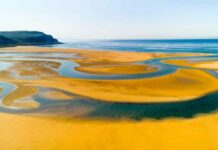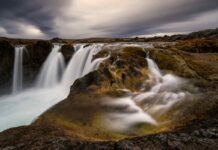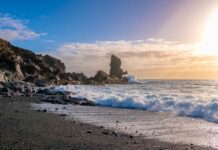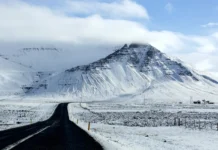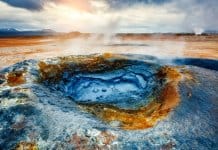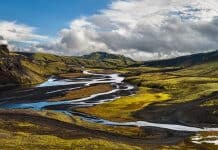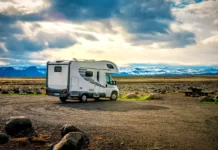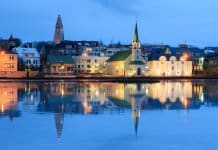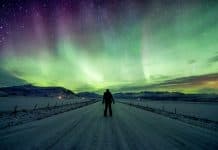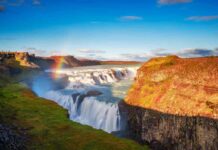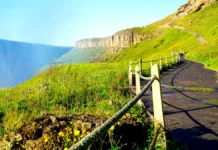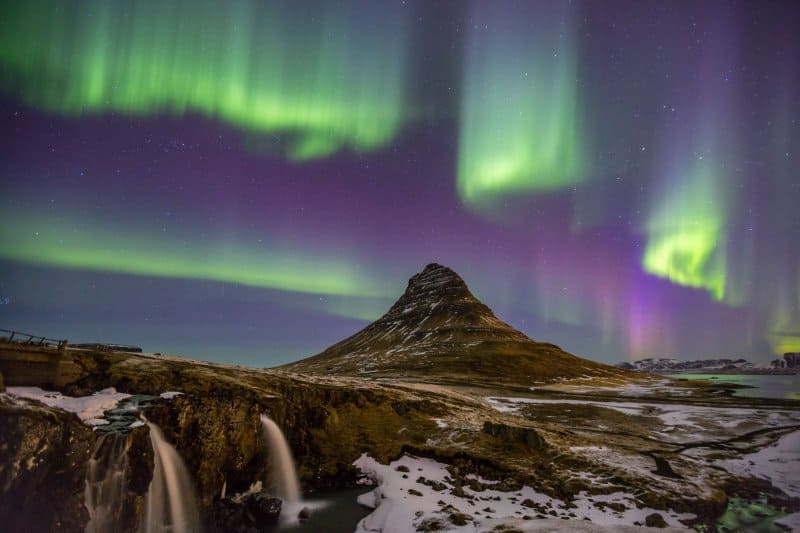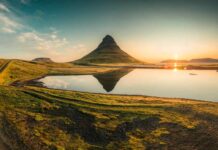Iceland is a place that can change completely depending upon the time of year you visit. The country that you experience in the summer, with music festivals, whale watching, and the Midnight Sun, is a completely different one than the island blanketed in snow where tourists go trekking on glaciers or explore ice caves and glacier caves. One of the many advantages of visiting during the darker, colder months is that the Aurora Borealis is visible. So what is the best month to see the Northern Lights in Iceland? Well to be fair, there are actually more important factors than just time of year. Guaranteed darkness and clear skies have more of an impact on your chances rather than the specific month when you go. It’s a bit of a cocktail of going at the right time of year with the right weather conditions and the right solar flare activity.
Let’s look at each of these factors to better understand how you can increase your chances of seeing the Northern Lights while in Iceland.

What Exactly are the Northern Lights and What Causes Them?
A simple explanation is that the Aurora Borealis is caused by bursts of energy from the sun. These solar flares emit supercharged particles that make their way toward earth. When they collide with the protons, neutrons, and electrons in earth’s atmosphere, the result is a beautiful display of emerald, magenta, turquoise, and indigo dancing across the nighttime sky.
When there is a period of strong solar flare activity, it is followed by lots of bright, beautiful waves of light in the heavens a few days later. There could be two or three days with lots of angry explosions of gases from the surface of the sun followed by a week of relatively low solar activity. Because this is entirely dependent on the whims of the glowing orb known as the sun, we can’t really predict it. What we can do, however, is pay attention to the aurora activity forecasts issued by the Icelandic Meteorological Office. They monitor solar activity and based on that, are able to reasonably predict how strong the Northern Lights will be on any given night. They also show cloud cover, another key factor in Aurora Borealis observation.
Northern Lights Season in Iceland
When trying to determine the best month to see the Northern Lights in Iceland, it’s more of a range than a specific month. You can start to see them again as soon as the neverending light of summer’s Midnight Sun ends. September through April are the best months to view them as far as darkness is concerned. You want nights that are fully dark, so technically the nighttime wonder is visible eight months out of the year. If you go during this time, you’re likely to see at least some auroral activity. It’s really a question of luck, location, and timing. I don’t recommend going to Iceland specifically to see the Northern Lights. This is especially true if it’s a short one or two-day trip. Think of the Aurora Borealis as more like the icing on the cake. It’s something really cool that might happen during your Iceland vacation.

Ideal Viewing Conditions
Let’s say you already checked the aurora forecast and activity predictions are high. That’s great news! But you won’t be able to see anything if they are blocked by clouds covering the nighttime sky. You’ll need clear or at most partly cloudy skies in order to view the Aurora Borealis. Skies tend to be clearer on nights that are colder.
Due to high levels of precipitation, most months during the Northern Lights season have plenty of overcast days and nights, so perhaps a better strategy would be to plan a longer trip to increase the probability of seeing them. If you are traveling around Iceland’s Ring Road, you may also be in luck; perhaps the cloud cover in Vik has cleared up by the time you drive to Reykjavik, or vice versa.
You’ll also want to be on the move if you’re staying in Reykjavik, Akureyri or any other city. Light pollution makes it harder to see the lights. Get as far away from civilization as possible for the best viewing experience.

Tour or DIY Aurora Borealis Hunt
It’s completely up to you whether or not you want to pay for a Northern Lights excursion or go it alone. The companies that lead these tours have taken the guesswork out of it for you. They check the forecasts of auroral activity and cloud cover. They’re also aware of exactly where to go to get the best viewing spots outside of the cities and towns. There might even be some secret location you were not previously aware of. The benefits of doing it yourself are of course cost and the freedom to go where you please. You start and end whenever you want, and it’s more of an adventure.
Conclusion
If you come to Iceland during Northern Lights season, I hope aurora activity is high and the skies are not too overcast. You’ll have a great time experiencing something that not many people get to see in their lifetimes. Remember to dress really warmly with lots of insulating layers. Good luck in your quest to find the Aurora Borealis.

